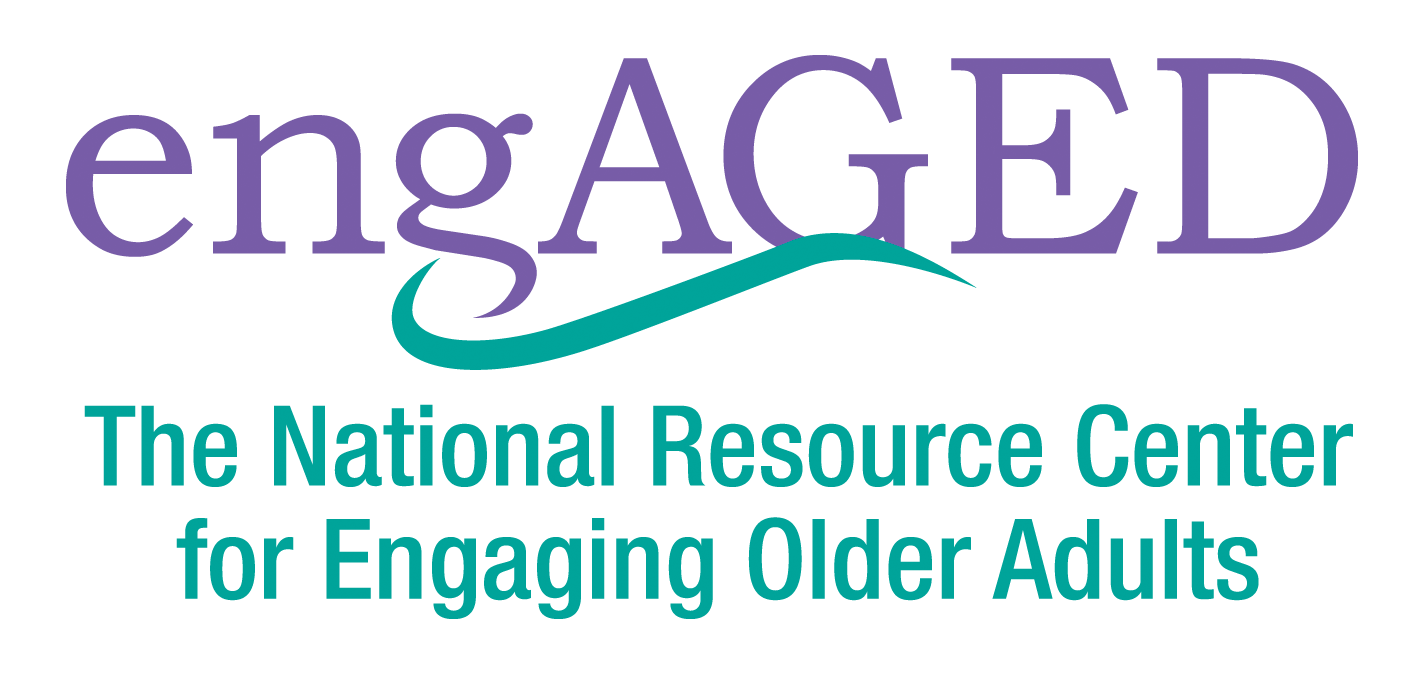Transportation and Social Engagement: Takeaways from the September engAGED Office Hours
In addition to helping riders get where they need to go, volunteer transportation programs help both older adult volunteers and riders remain socially engaged and connected. To assist the Aging Network with developing socially engaging transportation programs, engAGED partnered with the National Aging and Disability Transportation Center (NADTC; co-administered by USAging and Easterseals) to co-host a joint Office Hours call focused on transportation and social engagement.
Setting the Stage
While nearly 90 percent of older adults want to continuing living in their homes as they age, (1) transportation can be a major barrier. Most older adults rely on private vehicles as their primary mode of transportation, but on average men outlive their ability to drive by six years and women by 10 years. (2) When older adults can no longer drive, they are less likely to participate in social activities, which can lead to increased feelings of loneliness and isolation. Volunteer driving programs help extend the time older adults can stay in their homes and offer social connection for both the riders and the drivers.
NV Rides
NV Rides, an umbrella organization based in northern Virginia, coordinates a network of local partner organizations to provide volunteer rides to older adults. To support its partners, NV Rides runs background checks, operates ride software and provides regional coordination. Volunteer outreach and recruitment is also a critical part of NV Rides’ work, with recruitment efforts often focused on places and spaces that have active, healthy older adults. The average age of the volunteer drivers NV Rides works with is 68. Both older adult riders and drivers benefit from the social connection offered by the rides, with 94 percent of riders saying the volunteer rides are an important service for them and 95 percent of drivers indicating they would recommend others volunteer as volunteer drivers.
Tips for Starting a Volunteer Transportation Program
Interested in starting a volunteer transportation at your organization? NV Rides offered the following tips.
Start small:
Narrow your focus to a specific neighborhood, congregation or community group.
Start with a few motivated volunteers and known riders.
Keep it local—local riders, drivers and trips.
Make a plan:
Purchase umbrella insurance for your organization.
Determine what your organization can and cannot offer. Establish guidelines for medical rides, social outings, errands and religious services.
Conduct background checks and verify licenses and insurance of your drivers.
Have a plan for those requesting transportation related to sedation/anesthesia/hospital discharges.
Utilize a transportation coordinator:
Formalize your program and protect your volunteers’ time by requiring all requests go through a transportation coordinator. Consider creating a specific email address and phone number for the transportation coordinator.
Allow volunteers easy access to the transportation coordinator so they can ask questions and report concerns.
Use cloud-based software so the transportation coordinator can manage requests, coordinate riders and drivers.
Think outside the box by considering a homebound older adult serving as a transportation coordinator.
Tips for Creating Connection and Growing Existing Communities
To help create connections and grow existing communities, NV Rides suggested:
Keep it local. Connect volunteer drivers to riders in their neighborhood or to rides in places they want to go.
Allow destinations that interest drivers. Drivers often report they enjoy non-medical rides such as shopping and social events the most.
Cultivate community. Explore Lunch and Learns and other events that create and nurture relationships between riders and drivers.
Bring volunteer driving to places community already exists. This may include faith communities, senior centers and homeowners’ associations.
Create communities of care. Show your community the benefits of volunteer driving.
Engage non-driving volunteers. Older adult volunteers can also participate in friendly visiting phone calls or help with coordinating rides.
Additional Resources
For help with getting started forming a volunteer transportation program, NV Rides suggested the Shepherd’s Centers of America’s Volunteer Driver TurnKey Kit. NV Rides’ YouTube channel offers free training videos focused on boundaries, safe driving, falls prevention and more that other organizations can use. Visit NADTC’s website for additional resources as well.
1) https://www.healthyagingpoll.org/reports-more/report/older-adults-preparedness-age-place
2) https://www.consumerreports.org/elderly-driving/how-seniors-are-driving-safer-driving-longer/
